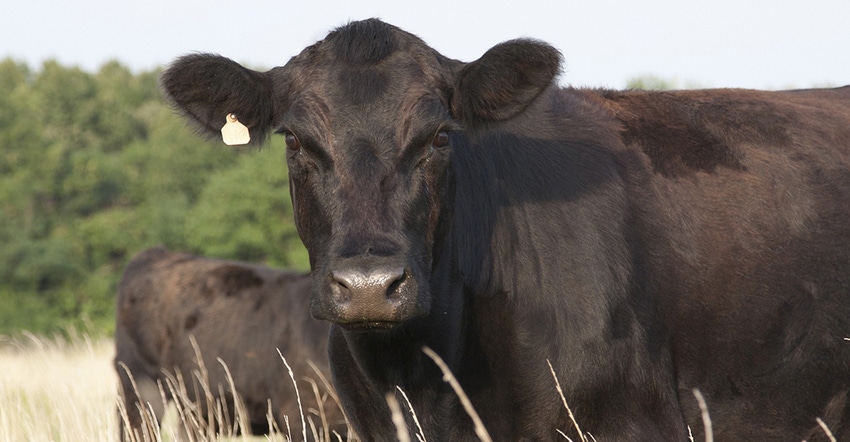Fall is here— it’s time to move the cows
Forages that once easily met beef cow requirements now no longer offer the needed nutrient supply
October 1, 2018

Sponsored Content
Extending your grazing season can dramatically reduce cow-calf carrying costs.
Yes, summer has passed, and we are quickly entering the fall season. For most spring calving herds, summer pasture rotations have been made to match moisture and growing conditions to maintain a supply of high-quality forages — but plants mature, and leaf growth for most grasses has slowed down. With this plant maturation comes fiber lignification, along with lower digestibility and a rapid reduction in energy availability, even with the capacity for rumen fermentation. The digestive passage rate decreases, as it takes longer to break down forages with increased rumination and fermentation times. This means that forages that once easily met beef cow requirements now no longer offer the nutrient supply needed to maintain cow body weight and body condition.
Extending the grazing period
Rather than trying to round up new pastures or bring higher-quality forages to the cow herd, what actions do most producers take or consider taking at this time of year? Most readers probably know where this is going. Crop aftermath, corn stalk grazing, stockpiled forages, etc., are all ways of extending the grazing period and are resources that should not go unused. Some regions of the country may not have access to these options, but many do, and the opportunity to cut feed costs by capitalizing on them can be significant.
As these acres become available after harvest, fencing and sourcing water should be considered, as should getting cattle to these new locations. When cattle are first introduced to cropland aftermath and corn stalks, the pickings will be good; there can be significant, nutrient-dense remnants left over from harvesting equipment that cattle will sort through, along with un-grazed headlands. Over time, these diminish, but there is still ample forage that, when paired with a protein self-fed supplement, can maximize returns from this land resource and maintain cow performance.

Benefits of protein supplementation
We know that producers who have both crops and livestock can capitalize on these synergies while reducing added feed costs to the cow-calf operation. Fall is a busy time on the crop production side, and determining when protein supplement is required is just one more thing that needs to be timed correctly. Self-fed low moisture block supplements can be a worry-free solution for maintaining optimal nutrient supply to your cow-calf herd. (Note: Any fall pastures, regardless of whether they are from corn stalks or crop aftermath, can be additional sources of forage with diminishing quality that can benefit from protein supplementation going into the fall.)
When cattle are turned out on crop aftermath or corn stalks, placing a self-fed low moisture block supplement will ensure that your cattle won’t miss a lick (pun intended). Most producers will say that they probably don’t need the supplement early on, when cattle are first introduced — and while this may be true, what we have found is that, early on, consumption of low moisture blocks is very low. Cattle are spending most of their time out grazing this new source of forages and tend not to consume as much supplement. We see the consumption of low moisture block increase when the nutrient quality of the forages begins to diminish. Utilizing this strategy ensures that your cows’ needs are met, and during the busy times of harvest, you don’t even have to worry about them. The containers can also serve as a barometer for the availability of forage: if you start to see cattle spend more time at the barrels than out grazing, it is probably time to move them to a new area of corn stalks, crop aftermath or wintering grounds.
One other benefit of low moisture block placement in the fall prior to weaning is the introduction of calves to a supplement. This can better prepare them nutritionally to combat weaning stress, not to mention that consuming supplement from a barrel will help them adapt to new feeding conditions. (Note: A fenced-off area with portable panels that permit only calves to enter is a great addition to providing a self-fed low moisture block supplement specifically fortified to prepare calves for weaning.)
With recent fetal programming research indicating the importance of maintaining adequate maternal nutrition throughout gestation, CRYSTALYX® Brand Supplements can be successfully used to not only help cows go into the winter in better condition, but also to make sure there are no major nutrient shortages for the developing fetuses.
Make sure you talk with your local CRYSTALYX dealer to get the products you need as you navigate the upcoming busy fall months.
About the Author(s)
You May Also Like



